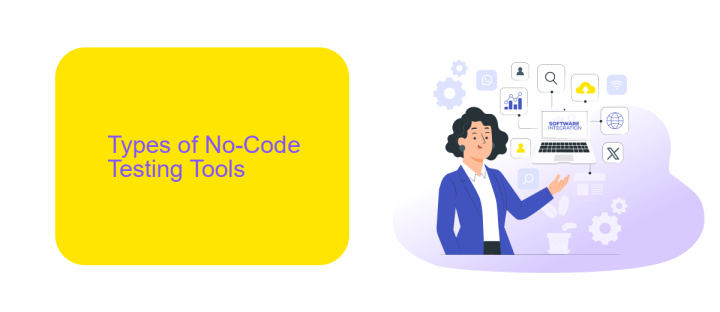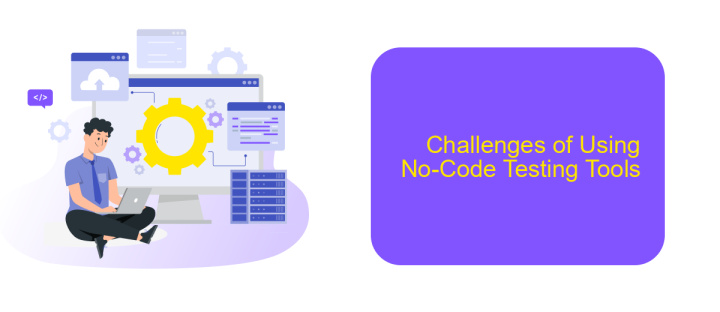No-Code Testing Tools
In today's fast-paced software development landscape, efficiency and speed are paramount. No-code testing tools have emerged as a game-changer, allowing teams to streamline their testing processes without the need for extensive coding knowledge. These tools empower testers and developers alike, enabling quicker iterations, reducing errors, and fostering a more collaborative environment. Discover how no-code testing tools can revolutionize your workflow.
Introduction
No-code testing tools are revolutionizing the way software testing is conducted, making it accessible to a broader range of professionals. These tools eliminate the need for extensive coding knowledge, allowing testers, developers, and even non-technical stakeholders to create, manage, and execute tests with ease. This democratization of testing processes ensures faster development cycles and higher-quality software products.
- Ease of use: Intuitive interfaces that require minimal training.
- Cost-effective: Reduced need for specialized coding skills.
- Flexibility: Suitable for various types of testing, from functional to performance testing.
- Integration: Seamless integration with other tools and platforms, such as ApiX-Drive for automated workflows.
By leveraging no-code testing tools, organizations can streamline their testing processes and improve collaboration among team members. Integrations with services like ApiX-Drive further enhance these tools by automating repetitive tasks and connecting disparate systems, thereby boosting overall efficiency. As a result, teams can focus on delivering high-quality software faster and more effectively.
Types of No-Code Testing Tools

No-code testing tools can be broadly categorized into several types based on their functionality and use cases. Firstly, there are visual testing tools that allow users to create and execute tests using drag-and-drop interfaces. These tools are ideal for non-technical users who need to perform UI testing without writing code. Examples include platforms like Testim and Leapwork, which enable users to automate testing processes visually.
Another type is integration testing tools, which are designed to test the interaction between different software components. These tools often come with pre-built connectors to various APIs and services, simplifying the process of integration testing. For instance, ApiX-Drive offers a no-code solution for setting up and managing integrations, making it easier to automate and test workflows across multiple platforms. Additionally, there are performance testing tools that help in assessing the speed, responsiveness, and stability of applications under different conditions without requiring any coding skills.
Benefits of Using No-Code Testing Tools

No-code testing tools offer a significant advantage for teams looking to streamline their software development processes. These tools enable individuals without extensive coding knowledge to create and execute tests, making quality assurance more accessible and efficient.
- Ease of Use: No-code testing tools are designed with user-friendly interfaces, allowing testers to create complex test cases through drag-and-drop functionalities.
- Cost-Effective: By reducing the need for specialized testers and developers, these tools can significantly cut down on labor costs.
- Faster Time to Market: Accelerate the testing phase, leading to quicker product releases and updates.
- Integration Capabilities: Services like ApiX-Drive facilitate seamless integration with various platforms, enhancing the automation process.
- Flexibility: Easily adaptable to different projects and requirements, making them suitable for a wide range of applications.
In conclusion, adopting no-code testing tools can revolutionize your software development lifecycle. By empowering non-technical team members to participate in testing, you can achieve higher efficiency, reduced costs, and faster delivery times. Services like ApiX-Drive further enhance these benefits by simplifying integrations, making your workflow even more streamlined.
Challenges of Using No-Code Testing Tools

No-code testing tools offer significant advantages, but they also come with their own set of challenges. One of the primary issues is the limited flexibility in customizing test cases. These tools often provide a range of predefined templates that may not cover all specific testing needs, leading to gaps in test coverage.
Another challenge is the scalability of no-code solutions. As projects grow in complexity, the simplicity that makes no-code tools attractive can also become a limitation. Managing and maintaining large test suites can become cumbersome without the ability to script custom solutions.
- Limited customization options
- Scalability issues with complex projects
- Potential integration challenges with existing systems
- Dependency on the tool's predefined functionalities
Integration with other systems can also pose difficulties. While services like ApiX-Drive can help streamline the integration process, ensuring seamless communication between various platforms can still be a challenge. Despite these hurdles, no-code testing tools remain a valuable asset, particularly for teams with limited coding expertise.
Conclusion
No-Code testing tools have revolutionized the way businesses approach software quality assurance. By eliminating the need for extensive coding knowledge, these tools empower a broader range of team members to participate in the testing process, thereby accelerating development cycles and reducing costs. They offer intuitive interfaces and functionalities that streamline the creation, execution, and management of tests, making it easier to maintain high standards of software quality.
Furthermore, integrating these No-Code testing tools with other services can significantly enhance their capabilities. Tools like ApiX-Drive facilitate seamless integration with various platforms, enabling automated workflows and real-time data synchronization. This not only improves the efficiency of testing processes but also ensures that all relevant stakeholders have access to up-to-date information. As the demand for faster and more reliable software development continues to grow, No-Code testing tools, combined with robust integration services, will play an increasingly critical role in achieving these objectives.
FAQ
What are No-Code Testing Tools?
How do No-Code Testing Tools work?
Can No-Code Testing Tools integrate with other software?
What are the benefits of using No-Code Testing Tools?
Are No-Code Testing Tools suitable for complex testing scenarios?
Routine tasks take a lot of time from employees? Do they burn out, do not have enough working day for the main duties and important things? Do you understand that the only way out of this situation in modern realities is automation? Try Apix-Drive for free and make sure that the online connector in 5 minutes of setting up integration will remove a significant part of the routine from your life and free up time for you and your employees.

